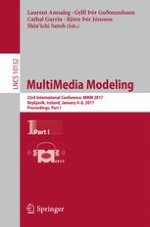2017 | OriginalPaper | Buchkapitel
Boredom Recognition Based on Users’ Spontaneous Behaviors in Multiparty Human-Robot Interactions
verfasst von : Yasuhiro Shibasaki, Kotaro Funakoshi, Koichi Shinoda
Erschienen in: MultiMedia Modeling
Aktivieren Sie unsere intelligente Suche, um passende Fachinhalte oder Patente zu finden.
Wählen Sie Textabschnitte aus um mit Künstlicher Intelligenz passenden Patente zu finden. powered by
Markieren Sie Textabschnitte, um KI-gestützt weitere passende Inhalte zu finden. powered by
